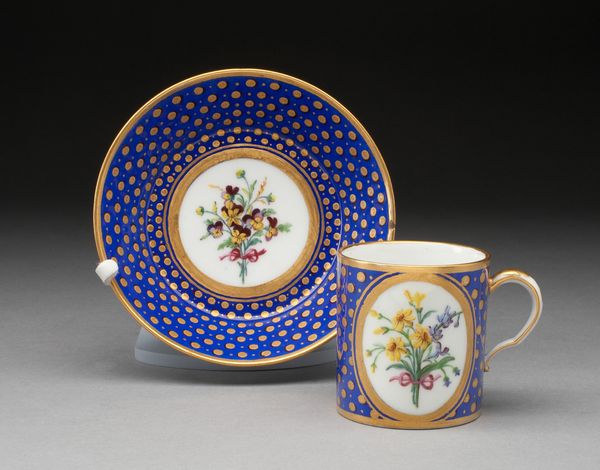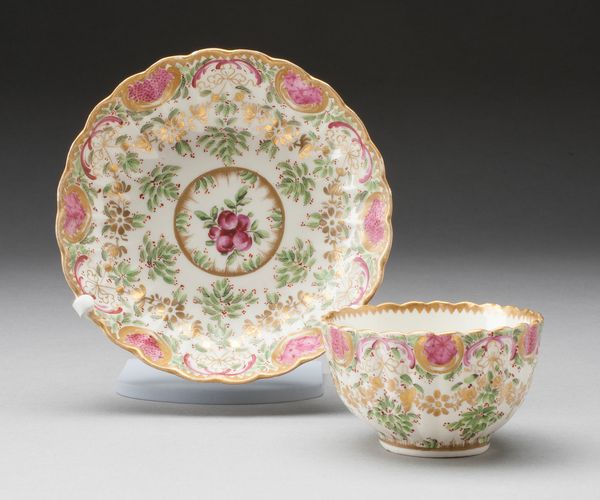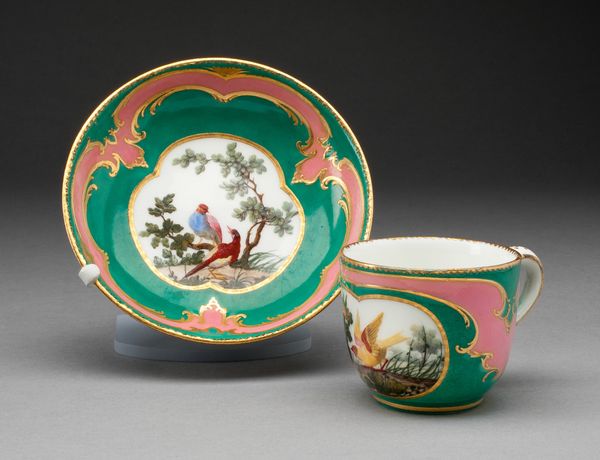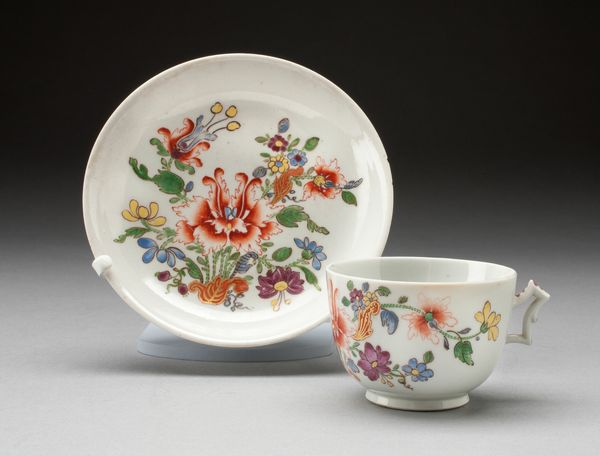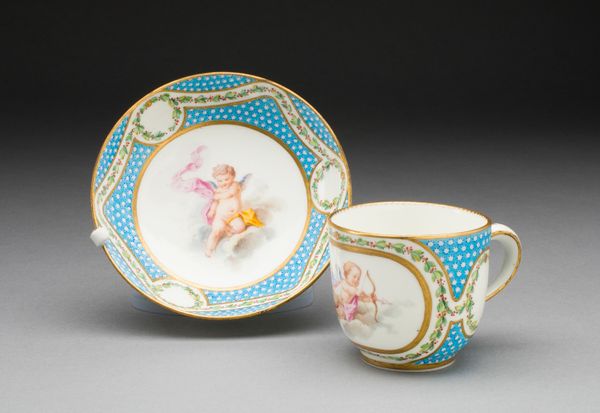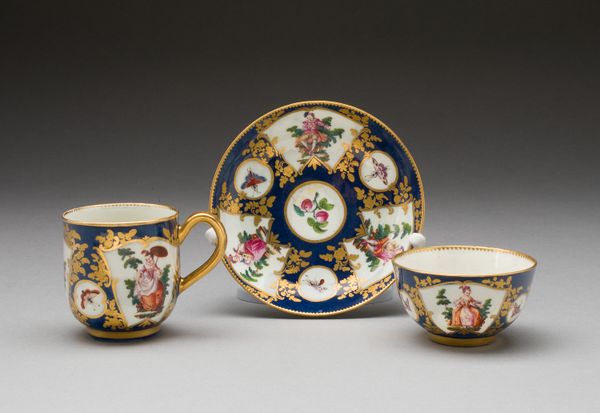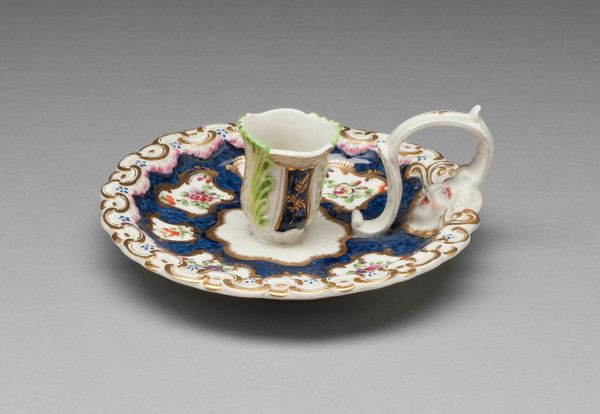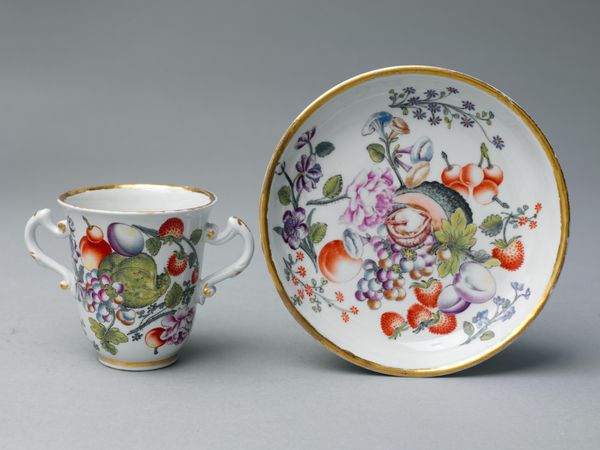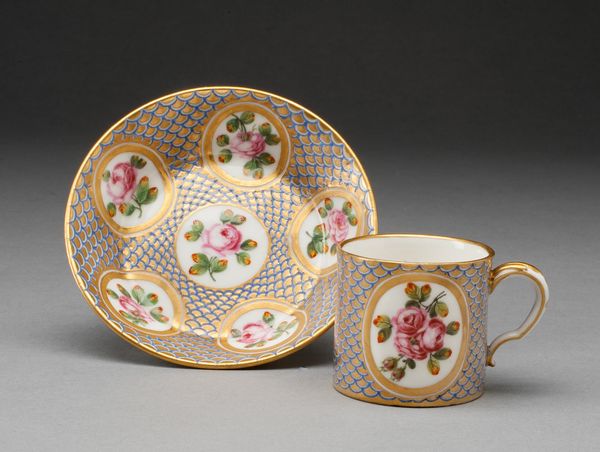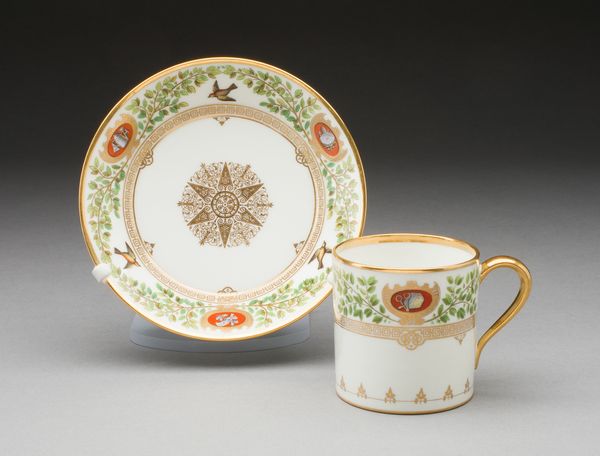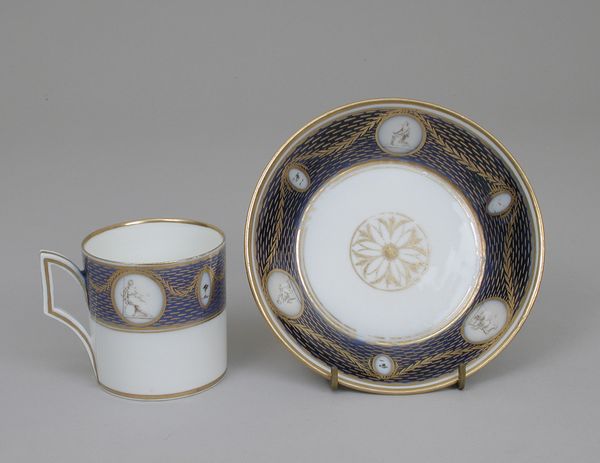
Dimensions: Cup: 7.6 × 10.2 × 7.3 cm (3 × 4 × 2 7/8 in.); Saucer: 3.8 × 14.9 cm (1 1/2 × 5 7/8 in.)
Copyright: Public Domain
Curator: Ah, this exquisite “Cup and Saucer” crafted in 1793 by the Manufacture nationale de Sèvres is a quintessential example of late 18th-century decorative art, currently held at the Art Institute of Chicago. Editor: My first thought is elegance; a refined object intended not merely for utility but to evoke delight, if not joy. The rich, deep cobalt blue…and those shimmering gilded floral patterns... there is something very alluring about this particular set, almost like looking at jewelry! Curator: Absolutely, these items represent more than tableware; they speak to the culture of elite society in pre-revolutionary France. Notice how neoclassicism is subtly expressed through the floral elements—while echoes of rococo persist in the shape and playful, lighthearted motifs. Each detail points to an era on the cusp of transformative change. Editor: How do the depictions of overflowing vases, flowers and fruits relate, symbolically, to that moment of historical change, would you say? I notice both cup and saucer both mirror very similar paintings within central cartouches or medallions, reinforcing the association with a life of excess, with both beauty and privilege… perhaps unwittingly offering some kind of insight into those social conditions at the time? Curator: Precisely! You touch on a sensitive but necessary association, as we decode imagery. Consider that objects like this weren't mere aesthetic flourishes; they helped the aristocracy display their refinement. While these displays projected power, they also inadvertently set a stage of excess against a looming backdrop of social unrest. This teacup encapsulates luxury and indulgence. Editor: Given how such artifacts became targets during the Revolution, the survival of something so fragile also seems significant; to endure violent, ideological change and be preserved as a quiet symbol of an eradicated elite speaks to resilience, no? It is also striking how such exquisite decoration and fine craft was put to such ordinary use… how did the politics of imagery and utility become part of daily life, shaping perceptions within elite and artisan classes? Curator: An important reminder of art's capacity to embody conflicting meanings across time, while such artifacts simultaneously mirrored prevailing aristocratic attitudes and subtly shaped aspirations across diverse segments of society... Editor: Yes indeed… its symbolic weight only amplifies with historical distance; still echoing even into our moment in some way...
Comments
No comments
Be the first to comment and join the conversation on the ultimate creative platform.

